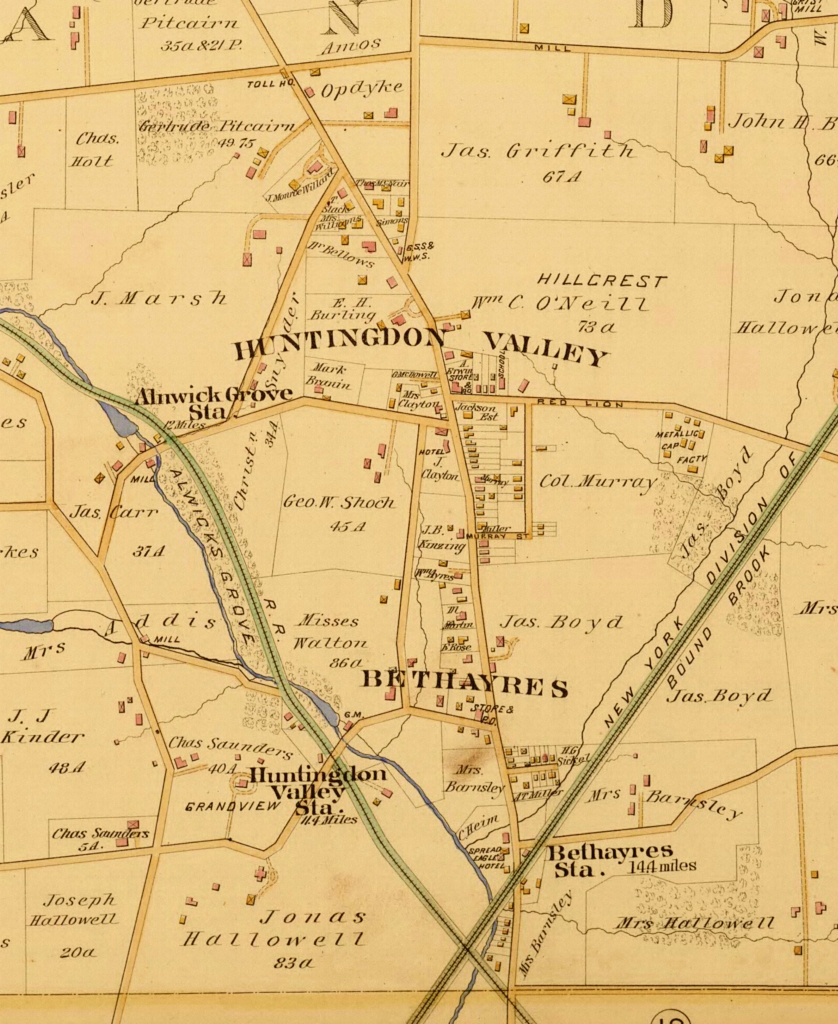Huntingdon Valley, resident and historian Fred Moore said, was originally named Goosetown due to so many geese being in the area.
English colonists arrived in the 1600s, and the area later became known as Huntingdon (sometimes spelled Huntington), then Huntingdon Valley.
For the story behind the name, some answers might be found in maps, home deeds, wills and history books.
Still, history books aren’t always accurate.

“It’s all pure conjecture,” Moore said.
One possibility, according to a review of late-17th century deeds near what is now the area of Welsh Road and Huntingdon Pike, could point to a landowner named William Huntley.
Another possibility is that it was named after Huntingdon, England, a town that was chartered centuries earlier. In England, there is also an Abington (and an Abingdon).
And, of course, Abington and Huntingdon Valley are neighboring areas, so perhaps they both got their names from existing areas of England.
“The names are very similar,” Moore said.
Moore has examined documents that showed the Huntingdon name from the early 1700s, even before Montgomery County was created in 1784, to more than 100 years later.
“We know it was there in 1701 and it’s still there in 1822,” he said.
Ultimately, Huntingdon became Huntingdon Valley.
A post office opened in 1850 at Welsh Road and Huntingdon Pike (moving to Red Lion Road in 1871), but there was already a Huntingdon, Pennsylvania, a borough in Huntingdon County, in the south-central part of the state.
To avoid any confusion, Huntingdon became Huntingdon Valley.
“It added a mystique to it,” Moore said of the newly named area. “A mystique. Where is this Valley?”
Huntingdon Valley really began to grow following construction of a railroad in the 1870s.
“Houses were being built on Huntingdon Pike in the 1880s as a result of the railroad being put in,” Moore said.
Huntingdon Valley became a destination for some people looking for large parcels of land due, in part, to the Huntingdon Valley Hunt Club, formed in 1914 at the Spring Brook Farm on Joseph Page’s 133 acres near Terwood and Davisville roads. Hunting was a fashionable sport among society people at the time, and real estate advertisements would often state that the property was adjacent to a hunt club.
The Huntingdon Valley Country Club also added to the higher standard of living. It was established in 1890 on both sides of Susquehanna Road at Baederwood, below Jenkintown, as the first Philadelphia-area country club organized solely for golf. In 1928, the club moved to land between Terwood and Welsh, from Paper Mill Road to Edge Hill Road.
Moore said these two well-heeled organizations gave an “air of exclusivity” to Huntingdon Valley.
It was in 1963 that the postal office introduced ZIP codes, 19006 for Huntingdon Valley.
“Huntingdon Valley is a place because it’s a ZIP code,” Moore said.
Today, residents of Huntingdon Valley take pride in where they live, no matter who named it a few hundred years ago.
“It’s not a borough. It’s not a township,” Moore said. “It’s a village.” ••


